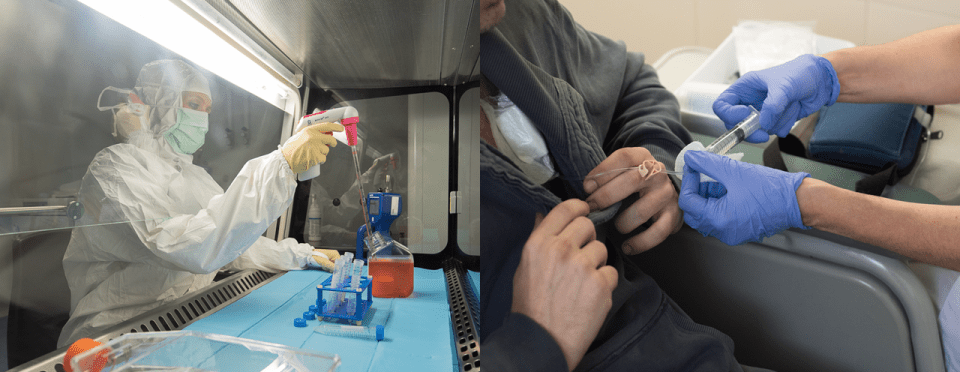Multiple myeloma is a malignant tumour of the blood cells responsible for producing antibodies in bone marrow. These cells, also known as plasma cells, have become malignant and are growing uncontrollably. To treat this disease, several immunotherapy treatments have been developed which have been shown to improve patient response and prolong their time without disease and increase life expectancy.
In light of this, the use of T-cells as a tool for eliminating tumour cells has been studied intensely in recent years. In particular, modified T-cells known as Chimeric Antigen Receptors (CARs) have sparked a revolution in the field of cancer immunotherapy. These modified cells are capable of efficiently eliminating tumour cells, particularly in haematological tumours such as leukaemia, lymphoma and myeloma. In this type of therapy, the patient’s own T-cells are obtained via a blood draw. Using genetic techniques, a molecule is placed on the surface of these cells, which allows the tumour cells to be specifically identified. These activated and modified cells are replicated in the laboratory, increasing the quantity thereof, before being re-administered to the patient.
In the United States, clinical trials are now underway with CAR T-cells in haematological neoplasia (B-cell acute lymphoblastic leukaemia, B-cell lymphoma and myeloma). The clinical results, albeit preliminary, have indicated great efficiency in patients for whom routine chemotherapy treatments, and even stem cell transplants, have not yielded positive results.
Chemotherapy has toxic effects such as generalised inflammatory reactions and neurological effects. While these may be severe, they are not usually long-lasting. Several hospitals and research centres in Spain, including the Hospital Clínic de Barcelona, are holding pre-clinical immunotherapy studies involving CAR T-cells. These are being held with a view to subsequently conducting trials on patients suffering from multiple myeloma. Research in this field is crucial for this type of therapy to become a short-term reality, and to improve its already very high effectiveness and reduce its toxicity in the not-too-distant future.




